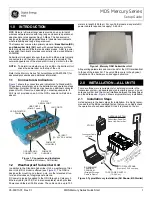
5
1
R
EPLACING
F
USES
If the fuse blows, determine the cause, then correct the
problem. After the problem is resolved, replace the fuse.
If newly installed fuses continue to blow, disconnect
the power cable and contact your authorized
Kenwood
dealer or an authorized
Kenwood
service center for
assistance.
r
e
v
i
e
c
s
n
a
r
T
A
5
1
y
r
o
s
s
e
c
c
A
d
e
il
p
p
u
S
e
l
b
a
C
r
e
w
o
P
C
D
A
0
2
Fuse Location
Fuse Current Rating
Only use fuses of the specified type and rating; otherwise the
transceiver could be damaged.
Note:
If you use the transceiver for a long period when the vehicle
battery is not fully charged, or when the engine is OFF, the battery
may become discharged, and will not have sufficient reserves to start
the vehicle. Avoid using the transceiver under these conditions.
ANTENNA CONNECTION
Before operating, install an efficient, well-tuned antenna.
The success of your installation will depend largely on
the type of antenna and its correct installation. The
transceiver can give excellent results if the antenna
system and its installation are given careful attention.
Use a 50
Ω
impedance antenna and low-loss coaxial feed
line that has a characteristic impedance of 50
Ω
, to match
the transceiver input impedance. Coupling the antenna
to the transceiver via feed lines having an impedance
other than 50
Ω
reduces the efficiency of the antenna
system and can cause interference to nearby broadcast
television receivers, radio receivers, and other electronic
equipment.
Note:
E market models use an N-type antenna connector while
other models use an M-type (SO-239) connector.
◆
Transmitting without first connecting an antenna or other
matched load may damage the transceiver. Always connect the
antenna to the transceiver before transmitting.
◆
All fixed stations should be equipped with a lightning arrester to
reduce the risk of fire, electric shock, and transceiver damage.
Feed line connector
Antenna connector
To antenna














































